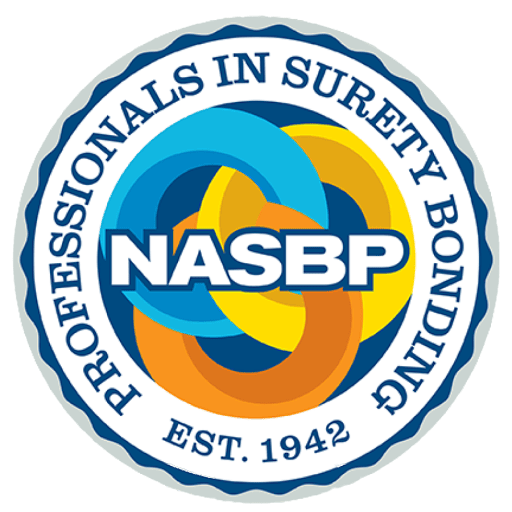By Aron C. Beezley, Nathaniel J. Greeson, and Steven C. Herrera of Bradley Arant Boult Cummings LLP
Originally published October 15, 2025
When a federal government shutdown occurs, contractors often face difficult decisions about whether to continue performance on certain contracts. In some cases, contractors may feel pressure—from either operational necessity or the government’s informal requests—to keep working despite funding lapses. However, doing so can expose a contractor to significant financial and legal risks.
Below, we outline what it means to perform “at risk” during a shutdown, and key factors government contractors should carefully evaluate before making that decision.
What Does Working “At Risk” Mean?
A contractor is considered to be working “at risk” when it continues to perform under a government contract without a valid funding obligation in place—meaning there is no appropriated funding legally available to pay for the work being performed.
During a government shutdown, this situation often arises because agencies cannot obligate new funds or modify existing contracts. Even if agency personnel urge a contractor to continue performance, such direction may not constitute a legally binding commitment if the government lacks the authority to incur new obligations during the lapse in appropriations.
The Anti-Deficiency Act and Lack of Authority to Obligate Funds
The Anti-Deficiency Act (31 U.S.C. §§ 1341 et seq.) prohibits federal employees from obligating funds that have not been appropriated by Congress. As a result, government personnel generally cannot authorize work or accept free services from a contractor during a shutdown, unless the activity is specifically exempted (for example, work supporting national security, the protection of life and property, or certain funded programs).
If a contractor continues work without a valid obligation, payment may be delayed — or, in the worst case, unrecoverable — absent later ratification by an authorized contracting officer or new appropriations legislation. Likewise, because the Anti-Deficiency Act is the only fiscal statute to impose both civil and criminal penalties upon government personnel (not contractors) for violations, contractors should generally try to avoid placing their government partners in precarious situations by continuing to work without authorization.
Risks of Continuing Performance
Working “at risk” carries several potential consequences, including:
- No guarantee of payment – The government may refuse to pay for work performed without an authorized obligation. This risk is especially true for contracts containing FAR 52.232-18, which limits government liability for payment in the absence of available funding.
- Cost disallowance – If the work is later deemed unauthorized, the contractor may not be able to recover its costs under the contract.
- Contractor responsibility – Continuing performance could lead to disputes over whether costs were “reasonable” and may complicate subsequent equitable adjustment or claims.
- Increased audit scrutiny – Auditors and contracting officers may closely examine any costs incurred during a shutdown period. Those costs may also be questioned in contracts requiring compliance with FAR Part 31.
Circumstances Where Work May Continue
There are situations where federal contractors may legitimately continue performance during a shutdown, including:
- Fully funded contracts – If the contract was fully funded before the shutdown, performance may generally continue.
- Multi-year or no-year appropriations – Certain contracts supported by multi-year or no-year funds may not be affected.
- Exempted activities – Work deemed essential to the protection of life, property, or national security may proceed, though such determinations should be clearly documented.
Contractors should confirm the funding status of their contracts with the contracting officer in writing before proceeding with any performance during a funding lapse.
Best Practices for Contractors
To mitigate risk, government contractors should consider the following steps:
- Obtain written direction – Request written confirmation from the contracting officer regarding whether to stop or continue work.
- Document communications – Keep thorough records of all communications with the government during the shutdown period.
- Segregate costs – Track any costs incurred during the shutdown separately in case of later funding or claim disputes.
- Assess business impact – Evaluate the financial risk of continuing performance without guaranteed payment.
- Develop internal shutdown protocols – Establish internal policies and communication plans for responding to shutdowns and funding lapses.
Seeking Equitable Adjustments After the Shutdown
If a contractor has performed work “at risk” based on government direction during a shutdown, it may later seek equitable adjustments or pursue a claim under the Contract Disputes Act (41 U.S.C. §§ 7101 et seq.) — particularly if the government benefits from the continued performance or subsequently ratifies the work. However, recovery is not automatic, and contractors must be prepared to demonstrate the government’s constructive or implied authorization and the reasonableness of their actions.
Conclusion
Government shutdowns create significant uncertainty for contractors, particularly regarding whether and when to continue work. While the desire to maintain good relationships with agency customers is understandable, performing “at risk” can create financial exposure. It can also expose government personnel to potential violations of the Anti-Deficiency Act.
To mitigate these risks, federal contractors should proceed cautiously, seek clear written direction from authorized contracting officials, and consult experienced government contracts counsel before undertaking any performance during a lapse in appropriations.
 Aron C. Beezley is the co-leader of Bradley’s nationally ranked Government Contracts Practice Group. Beezley’s experience includes representation of government contractors in numerous industries and in all aspects of the government-contracting process, including negotiation, award, performance, and termination. He can be reached at abeezley@bradley.com or 202.719.8254.
Aron C. Beezley is the co-leader of Bradley’s nationally ranked Government Contracts Practice Group. Beezley’s experience includes representation of government contractors in numerous industries and in all aspects of the government-contracting process, including negotiation, award, performance, and termination. He can be reached at abeezley@bradley.com or 202.719.8254.
 Nathaniel J. Greeson is a Partner with Bradley. He helps clients solve government contracts challenges. Greeson represents clients in a range of government procurement issues, including bid protests, claims, disputes, audits, and investigations. He can be reached at ngreeson@bradley.com or 202.719.8202.
Nathaniel J. Greeson is a Partner with Bradley. He helps clients solve government contracts challenges. Greeson represents clients in a range of government procurement issues, including bid protests, claims, disputes, audits, and investigations. He can be reached at ngreeson@bradley.com or 202.719.8202.
 Steven C. Herrera is a Senior Attorney with Bradley in the Construction and Government Contracts practice groups. His practice is primarily focused on U.S. government contracts and procurement law, particularly high-value procurements, billion-dollar litigation, and intricate bid protests. He can be reached at sherrera@bradley.com or 713.576.0393.
Steven C. Herrera is a Senior Attorney with Bradley in the Construction and Government Contracts practice groups. His practice is primarily focused on U.S. government contracts and procurement law, particularly high-value procurements, billion-dollar litigation, and intricate bid protests. He can be reached at sherrera@bradley.com or 713.576.0393.
Republished with permission. The article, “Government Contractors Working “At Risk” During a Shutdown: Key Considerations” was originally published on BuildSmart by Bradley Arant Boult Cummings LLP. Copyright 2025.
Get Important Surety Industry News & Info
Keep up with the latest industry news and NASBP programs, events, and activities by subscribing to NASBP SmartBrief.





